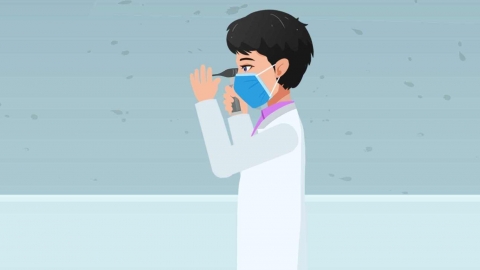What are the types of forced positions?
Generally, a compulsory body position refers to a specific posture that an individual is forced to assume in order to alleviate discomfort caused by illness. Common types include compulsory supine position, compulsory prone position, compulsory lateral position, compulsory sitting position, and compulsory squatting position. Detailed explanations are as follows:

1. Compulsory Supine Position: This position is typically caused by abdominal pain. The patient lies on their back with bent legs, which helps relax the abdominal muscles and reduce abdominal tension to relieve pain. For example, patients with acute peritonitis often maintain this position; changing posture increases abdominal muscle tension and worsens pain.
2. Compulsory Prone Position: This position is suitable for individuals with back conditions. Lying face down reduces pressure and strain on the back muscles, thereby alleviating back pain. For instance, patients with spinal disorders can achieve relative relaxation of back muscles when prone, reducing stimulation at the affected site and relieving pain.
3. Compulsory Lateral Position: Patients with disease affecting one lung or pleura often adopt this position. For example, patients with a large amount of fluid accumulation on one side of the chest cavity are often forced to lie on the affected side. This limits movement of the affected thorax, reduces compression of the fluid on lung tissue, and allows the healthy lung to perform gas exchange more effectively, thus maintaining normal respiratory function.
4. Compulsory Sitting Position: Also known as orthopnea, this is commonly seen in patients with severe breathing difficulties, such as those with acute left heart failure. When sitting upright, venous return from the lower limbs decreases, reducing pulmonary congestion. At the same time, the thoracic cavity volume increases relatively, enhancing lung expansion and significantly improving shortness of breath. Lying down would markedly worsen dyspnea.
5. Compulsory Squatting Position: This position is often observed in individuals with circulatory system disorders, such as those with tetralogy of Fallot. During physical activity, these patients may suddenly and voluntarily squat for a short period. This squatting position increases resistance in the lower limb blood vessels, reduces venous return to the heart, lessens cardiac workload, and improves pulmonary blood perfusion, thereby relieving symptoms such as dizziness and fatigue caused by hypoxia.
If any of the above-mentioned compulsory positions are observed, one should promptly pay attention to their health status, seek early diagnosis of the underlying cause, and take targeted measures. Additionally, maintaining healthy lifestyle habits is important to support recovery.




